The Best Employee Attendance Tracker Apps in 2025
Streamline attendance management and boost productivity with these cutting-edge solutions for businesses of all sizes.

Companies with a strong onboarding program experience an 82% increase in new hire retention and over 70% improvement in productivity, reveals The True Cost of a Bad Hire Glassdoor study. Conversely, a candidate often loses confidence without one, increasing the chances of leaving the employer within the first year.
Beyond new tasks and responsibilities, stepping into unfamiliar territory and acclimating to a different work culture makes being the new employee challenging, outlining a need for guidance and support.
Understanding how this can influence the entirety of the company is the topic of this Shortlister article, which touches on the key elements behind a carefully created employee onboarding program and its importance.
Employee onboarding is a process that ensures the successful integration of new hires into their roles and the work environment. Apart from acquainting employees to their job responsibilities, the goal of an onboarding program is also to ensure the best job performance.
In some companies, this is often confused with orientation, another HR process that targets the early stages of employee hiring.
However, orientation is much shorter and usually happens within the first couple of days of employment after successful recruitment. Its goal is to familiarize the new hires with the working environment, their new co-workers, departments, policies, etc. It also involves paperwork, providing the necessary equipment and resources, and assigning mentors or “buddies.”
In comparison, as a much more comprehensive and lengthy process, onboarding goes beyond the basics and focuses on additional aspects we’ll explore in this article.
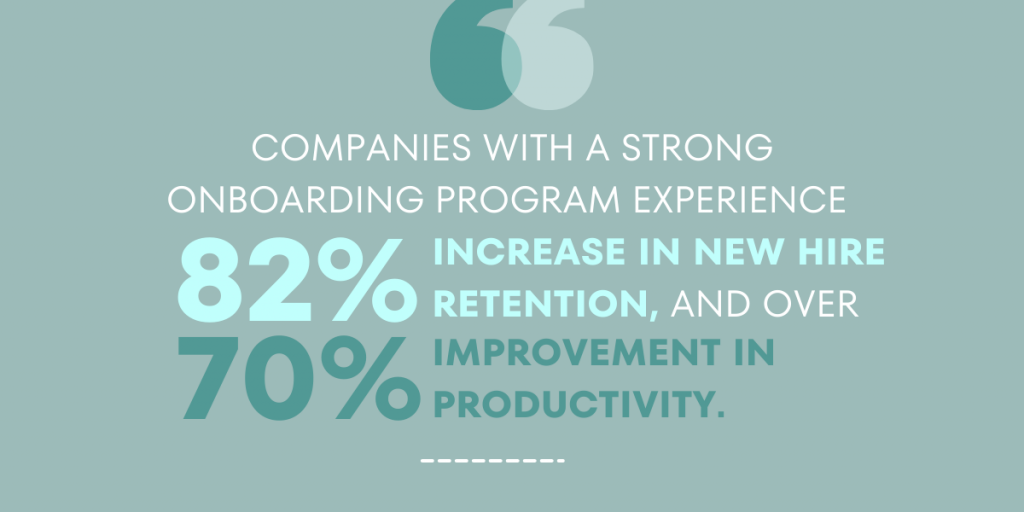
As an umbrella term for acclimating new workers to the organization, onboarding is an all-encompassing process that, when done correctly, can improve employee satisfaction, retention, and productivity.
It includes many aspects, from pre-boarding and welcome sessions to goal setting, tracking, and mentorship. With the help of HR experts and managers or supervisors, effective onboarding should help employees feel welcomed and more confident in their roles.
Unfortunately, Gallup reports that less than a third of workers, or 29%, felt fully prepared and supported after their onboarding experience.
To ensure this doesn’t happen, it’s vital to understand the comprehensive nature of this process, summed up in these five stages:
Acquainting the employee with compliance policies, benefits package information, an employee handbook, dress codes, and other resources before arrival.
Introducing workers to colleagues, management, and leaders upon arrival, answering questions, filling out paperwork, setting expectations, and familiarizing them with the company culture and policies.
Setting up workshops, mentoring, and encouraging employees to ask questions to speed up the learning curve.
Integrating new hires and their cultural immersion into the team.
After the first few months, employees and their managers should continue with regular feedback on both ends to identify potential challenges or concerns and prevent them from affecting performance or job satisfaction.
While these are the main phases of the onboarding process chronologically, creating a solid onboarding process requires understanding another critical approach, or the “Four C’s.”
Coined by Dr. Tayla Bauer, the Four Cs of onboarding stand for:
They represent the different layers of this process, emphasizing the need to move away from the simple orientation and comprehend the complexity and value of professional and social acclimation.
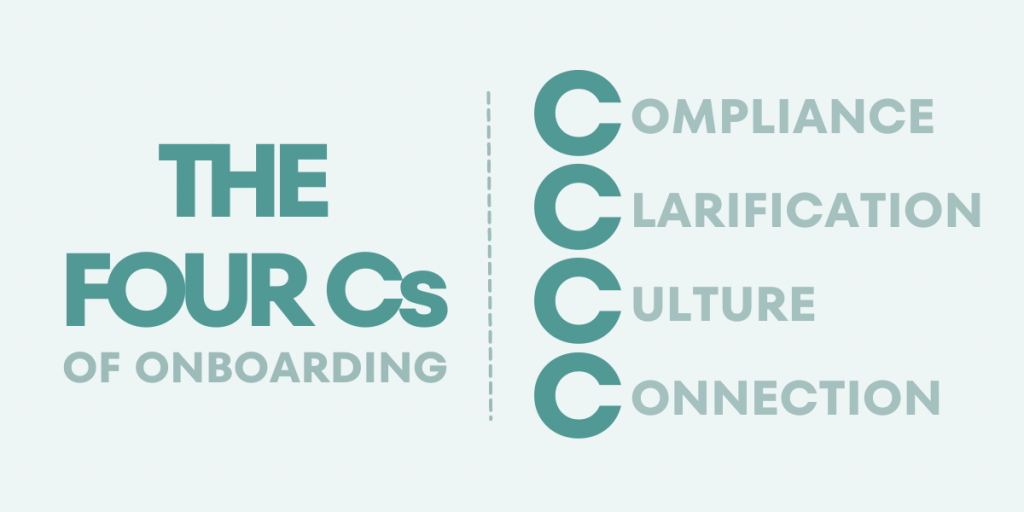
On average, recruiting a candidate takes 26 business days, while for a white-collar position, the number goes as high as 68 days, reveals the Society of Human Resource Management (SHRM).
Since it’s such a complex process, one would expect onboarding to last longer. Yet, most companies spend less than 30 days.
CareerBuilder surveyed more than 2,300 managers and found that a quarter of employers onboard their employees in one day or less. An additional 26% of companies extend this process to a week and 21% to a month.
Only 11% of employers onboarded new hires for three months and more.
Although the duration depends on many factors, including the industry and the role itself, a few days is still not enough time to integrate an employee into the company. Instead, a well-structured onboarding program should last at least a few months, with some extending up to a year.
Factors that can help employers determine how long theirs should be are:
Setting up a strategy and a timeline that weighs in these factors, the four Cs and all onboarding stages will differ for every employer. Ultimately, the goal is to find one that maximizes the benefits for all parties involved.
While their True Cost of a Bad Hire report reveals 70% higher productivity, another Glassdoor survey exploring the impact of effective onboarding shows that 49% of new hires contributed to their team within the first week.
The survey findings reveal positive outcomes in other areas, including:
A good employee onboarding program develops a productive, engaged, and loyal workforce.
However, before employees can reap these benefits, they should move away from the short-term offhand approach and on to strategic onboarding. That means making this process part of the company’s long-term business goals and ensuring its continuity beyond orientation.
Strategic onboarding sets up a system that companies can use to tap into the full potential of their hires. It paves the way for a more positive and productive employment relationship from the very beginning.
As a holistic approach, it comes with many steps that ultimately answer how to create an onboarding process tailored to the company’s unique needs.
The time and resources that go into onboarding change for every employer, depending on their resources, expectations, and end goals. Therefore, answering how to create an onboarding process to maximize success can vary significantly.
Usually, it’s a mutual effort between leadership, HR, managers, and all employees, and it comes in several stages. Each has specific checkpoints to follow from the first day up until the first year of the person’s employment.
Before we get into that, let’s explore what goes into creating the onboarding process before its strategic implementation.
Before creating an onboarding process, take the time to evaluate the current one. This assessment should determine what works well, what can be improved, and what should be removed.
Collecting this information might require facilitating employee surveys, getting regular feedback from new hires, and conducting exit interviews, especially for workers who resign within the first year.
Identifying potential issues and areas where the workforce feels most supported can be a solid basis for the new onboarding process.
Since employee onboarding is not a one-size-fits-all process, the next step is to set up the goals and expectations unique to the organization. To do that, companies should answer the following questions:
The questions listed above set the foundation for successful hiring beyond recruitment and orientation. Using them to create an onboarding guide can help acquaint new hires with all relevant information, including the company history, policies, departments and teams, job training, expectations, and resources.
It’s also an excellent way to keep consistency and ease the entire process.
A comprehensive guide should include all stages from day one of employee onboarding until the end of the program. Therefore, when creating it, consider the following aspects:
One last step to consider before formally integrating your program is choosing the correct talent management solutions to complement the experience.
It’s important to mention that the onboarding program starts much earlier than the worker’s first day. In fact, it’s interconnected with the hiring process.
Employee experience, positive or negative, starts forming during recruitment.
So, things like the hiring duration, company feedback, and overall communication during the hiring phase can influence how the new employee perceives the company.
Companies leverage HR technology for a better experience and a smoother handoff.
For example, HR professionals use employee onboarding software to help them automate paperwork, track progress, and provide access to essential resources.
Beyond this, recruitment software and tools like applicant tracking systems (ATS) and candidate relationship management software can facilitate the transition from recruitment to onboarding, improve communication, and shorten the hiring process.
ATS solutions, for example, automate the pre-boarding process by briefing new hires on what to expect and preparing the paperwork online. Smaller business owners who can’t afford comprehensive employee onboarding can use free ATS tools to cut costs.
Overall, the goal of using HR technology is to streamline the onboarding process from start to finish.
Between entering a new environment and the need to fit in, the first day at a new job can be stressful for any worker, no matter how experienced they might be. That’s why a vital part of the onboarding program is ensuring a good start immediately – this is orientation.
During the first day and up to a week, the employer must lay down the expectations and objectives for the new hire. This step includes anything from the job description to performance expectations. Additionally, it’s vital to outline short-term and long-term goals so the new hire can understand how their role aligns with the broader company objectives.
This phase also involves the meet-and-greet of everyone from leadership and upper management to new colleagues and mentors. Workers get to introduce and acquaint themselves with other members of the organization and get a glimpse of the company culture, a crucial aspect they’ll explore in the upcoming weeks and months.
Finally, once they settle in, finish the paperwork, and get their equipment, workers get introduced to their responsibilities and tasks. Clear guidance for new and existing employees is necessary to avoid misunderstandings or overlap in job duties.
Up to 20% of employees leave within the first 45 days of employment, reveals an SHRM report, making this a crucial stage of the onboarding cycle.
As orientation concludes, the following weeks and months should focus on on-the-job training. The goal is to make employees feel more confident in their new roles and set the stages for further development.
Statistics show that the majority of the workforce, or 92%, agree that well-planned training programs positively impact their engagement. For 94%, this is also an essential policy that would convince them to stay with the company.
However, balancing job responsibilities in a new work environment and training can become overwhelming for any new hire. Apart from the necessary information and resources, companies can also enable practical hands-on experience and job shadowing to prevent this.
Another important aspect within the first few months is appointing mentors or “buddies”. The latter is someone, usually a co-worker, who partners with the new hire to make the transition to the work environment and tasks more manageable.
A Microsoft report found that meeting a work buddy within the first 90 days increased productivity. The percentage of respondents who were productive grows proportionally with the times they met their buddy in the first three months, or:
As for mentorships, they play a pivotal role in employee integration, career development, and overall satisfaction. In fact, one survey by CNBC and SurveyMonkey reveals that nine out of ten workers with a mentor are satisfied with their job.
Providing guidance sets employees on the right path, ultimately benefiting the company.
One final aspect of this phase is implementing regular check-ups and feedback sessions, which should continue in the later stages of the onboarding process.
Using feedback from the first few months determines the transition between orientation and retention. Companies can ensure long-term engagement and lower turnover rates by listening to employees, tracking their progress, and tending to their needs.
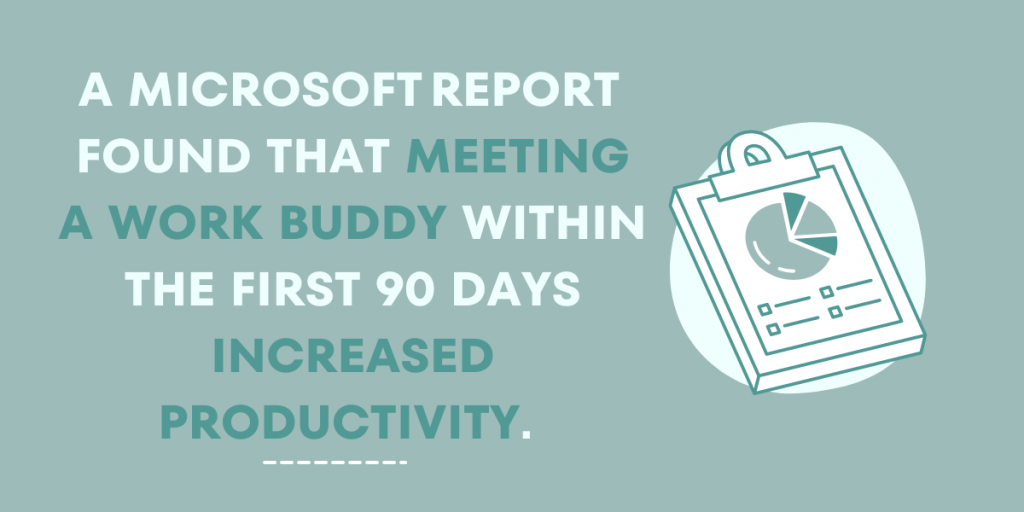
At this stage, the new hire becomes a fully-fledged employee.
Although the numbers state a much shorter duration, a continuous development approach beyond traditional onboarding shows the employer’s commitment to professional growth. This includes offering additional training, workshops, and resources that align with the employee’s career aspirations.
Feedback sessions should continue, and within the first year, the company should conduct the first performance reviews. These include compensation conversations, assessing workers’ progress, acknowledging their achievements, identifying improvement areas, and setting goals for the upcoming year.
Statistics indicate that up to 77% of workers who underwent a formal onboarding program met their first performance goals. What’s more impressive is that those who engage in one-year programs gain complete work competence 34 times faster than their peers.
Overall, the first year of an employee’s journey demonstrates ongoing organizational commitment and support, ultimately benefiting everyone.
A company is only as good as its workers.
Thus, its potential undoubtedly increases with a high-quality onboarding program.
Seeing employees for who they are and who they can become instead of replaceable assets is the essence of what a good onboarding process should look like.
It goes beyond overwhelming employees with information on their first day and giving brief job instructions. Instead, it’s strategically tailored to fit the company’s goal, increasing its bottom line when executed correctly.
The holistic, long-term approach we discussed in this article, with attention to each stage, helps employees reach professional milestones while integrating them into all aspects of the workplace.
Content Writer at Shortlister
Browse our curated list of vendors to find the best solution for your needs.
Subscribe to our newsletter for the latest trends, expert tips, and workplace insights!
Streamline attendance management and boost productivity with these cutting-edge solutions for businesses of all sizes.
Gain insights into applicant tracking system pricing with a comprehensive cost vs. value analysis. Discover how investing in the right technology can optimize your recruitment process for maximum efficiency and results.
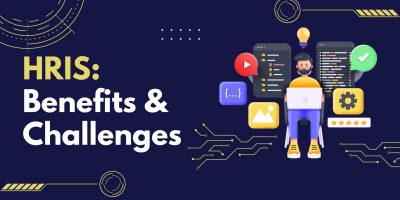
From streamlining administrative and bureaucratic tasks to boosting motivation and productivity – the benefits of HRIS within an organization are extensive, making the investment worth it for both HR departments and companies.
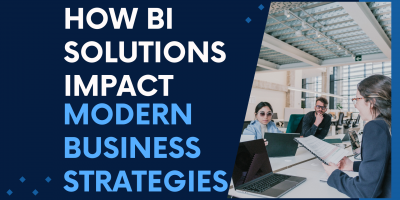
Explore the transformative influence of BI solutions on contemporary business strategies.
Used by most of the top employee benefits consultants in the US, Shortlister is where you can find, research and select HR and benefits vendors for your clients.
Shortlister helps you reach your ideal prospects. Claim your free account to control your message and receive employer, consultant and health plan leads.